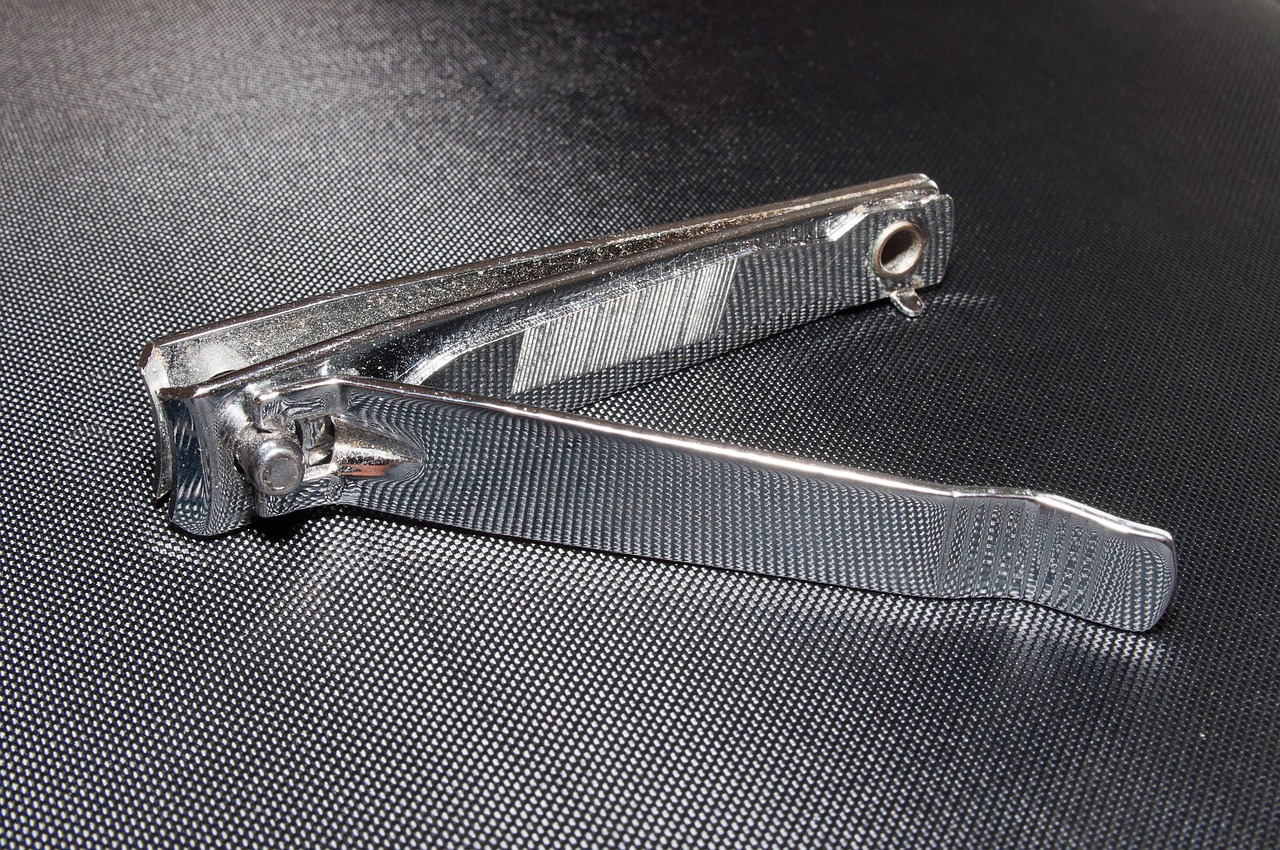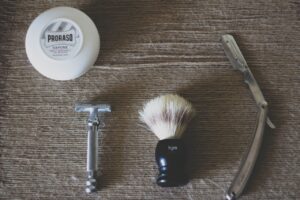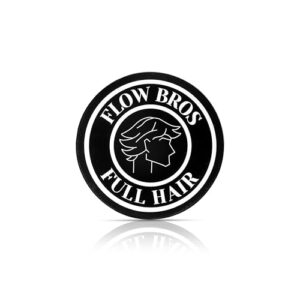Fix Clipper Lines Fast: Clean Up Your Fade in Minutes
Erase harsh clipper lines fast with five focused steps: assess, set tools, blend, detail, finish. Crazy fact: one tiny clipper angle can create a visible line. Follow this quick, practical plan to restore a smooth, natural-looking fade in minutes now.
What You'll Need
Erase Clipper Lines on a Cocker Spaniel: Grooming Tips & Clipping Secrets
Step 1 — Inspect and Map the Problem
Is it a tiny nick or a stubborn canyon? Know before you dive in.Inspect the fade from multiple angles under bright light and with a handheld mirror. Comb the hair flat and take a photo — photos catch subtle contrasts you might miss in the moment.
Decide whether you’re facing a surface hard line (a sharp contrast between two lengths) or a dropped gradient (a noticeable jump in elevation or guard size). Use simple tests: have the client tilt their head, run fingers through the area, and view from above.
Look for these signs:
Mark the highest visible hard line with the comb edge or a tiny parting — this becomes your reference. Good assessment prevents unnecessary cutting and tells you whether you can fix it with a quick blend or need to regrade a larger section.
Step 2 — Set Your Clippers and Remove Bulk
Wrong guard, wrong mood — learn the simple dial tweak that saves hours.Attach the guard that sits just above the hard line length — one size longer than the shorter side. For example: if the short side reads like a #1, start with a #2 guard.
Close the clipper lever slightly to create an intermediate length; this softens the jump without removing too much. Hold the clippers parallel to the scalp.
Lift gently and use upward flicks through the line area — don’t press the blades flat into the skin. Move the tool with light wrist flicks so you take off bulk, not create another hard edge.
Work symmetrically on both sides of the line: remove bulk above and below the hard edge in small passes. Check your work frequently by combing the hair down and viewing from different angles.
Keep these quick reminders in mind:
Step 3 — Blend with the Lever, Corners, and Clipper-Over-Comb
Levers and angles are your secret weapons — like a paintbrush for fades.Open and close the clipper lever in short strokes to feather the transition. Use quick 1–2 second flicks, not long passes, so you remove hair gradually and avoid a new line.
Use the corner of the blade at a 45° angle to get closer to the skin without digging in. Tip: for a temple line, rotate the clipper so the corner rides along the curve — you’ll shave the ridge while keeping a soft edge.
Employ clipper-over-comb for the softest blend: lift hair with the comb to the target length (for example, 1/4–1/2 inch), rest the comb’s teeth against the head, and run the clipper along the comb’s spine, moving down the head slowly.
Alternate lever settings as you work upward and downward to erase ridges. Keep movements small and check frequently in the mirror — blending is incremental, not aggressive.
Watch for uneven spots, and revisit them with short lever changes and repeat comb passes until the fade reads smooth from every angle.
Step 4 — Detail with a Trimmer and Scissors
Tiny tools, huge difference — trim like a pro without wrecking the fade.Switch to a trimmer/edger for fine refinement. Work lightly—use short, feathering strokes to soften the very edge of the line and to clean around ears and the nape. For example, run the trimmer at a shallow angle along the hairline and use gentle flicks instead of one hard pass.
Use scissors over comb on stubborn hairs that resist clippers. Lift small sections with the comb and make tiny snips (2–3 mm) to preserve the fade’s shape—think of it as tidying patches rather than cutting large lengths.
If the line is ultra-sharp near skin, attach a close guard or set the lever barely open and move in soft sweeping motions. Avoid digging in; multiple light passes beat a single aggressive one.
Constantly step back and compare both sides in the mirror to maintain symmetry. Check from different angles and under varied light to catch any remaining ridges.
Step 5 — Final Checks, Texture, and Aftercare
Polish, compare, and lock it in — tiny checks prevent big regrets later.Rinse or wipe away loose clippings, then check the fade in natural light—move the client a few feet from the mirror or step outside if possible. Inspect from multiple angles and squat to see the backline.
Add texture to disguise faint lines: apply a pea-sized dab of matte paste to fingertips and lightly rake through the top, or do tiny point-scissor cuts (1–3 mm) into dense areas to break up rigid edges. For example, point-cut a few vertical snips along a visible ridge and re-check.
Ask the client or review photos: confirm whether they want a sharper, cleaner finish or a softer, more blended look. Respect preferences and adjust gently.
Finish edges with the trimmer—use short feathering strokes around the hairline and nape. Recommend maintenance: touch-ups every 1–2 weeks, avoid aggressive self-fades until confident, and wash/style with light product to preserve texture.
If lines persist despite these fixes, consider a controlled regrade or recommend a barber visit.
Quick Fixes, Better Fades
Fixing clipper lines depends on measured assessment, correct guard choices, careful blending, and precise detailing; practice these five steps and you’ll regularly rescue fades quickly without restarting, turning every near-miss into a clean finish with confidence and speed every time?












Nice guide. My only nitpick: maybe include photos for Step 3. Visuals for lever positions would help beginners a ton.
Agreed — I learn faster by watching someone mess up and fix it than reading 10 paragraphs 😂
Good suggestion — we’re planning to add annotated photos and short clips for lever positions in the next update. Thanks!
Video slow-mo of the clipper-over-comb would be perfect for the tricky bits.
Yes please photos. Even quick before/after shots make learning quicker.
Tried this on a buddy yesterday — the “Inspect and Map” step actually saved me. I usually jump straight to clippers and make a mess, but pausing to map the problem made blending with the lever WAY easier.
I followed Steps 2 and 3 exactly, used clipper-over-comb for the temple area and it blended so much smoother. Left a little more texture with the scissors per Step 4.
Two quick questions: do you guys always finish with a trimmer on the neckline, or only when it’s messy? Also, any tips for fixing a hard line near the ear without taking too much length off?
Yep same — trimming every time makes the cut look too ‘manufactured’ imo. Soften it with scissors and you’re golden.
Great to hear it helped! For necklines I usually trim first with the trimmer to clean the edge, then feather with scissors to avoid a harsh step. For hard lines near the ear, try a 1-2 guard and a very light clipper-over-comb, then soften with the lever slightly open.
I only do the trimmer if the client wants a crisp finish — otherwise I just tidy with scissors. For the ear, angle the comb so the guard hits the longer hair and slide up slowly.
This guide is like a crash course in ‘how not to terrify a client’. Step 1 = breathe. Step 2 = don’t go savage with the 0. Step 5 = give them gum and a mirror 😂
Gum optional, confidence mandatory 😅
Haha, agreed — the mirror step is underrated. Showing progress reassures the client and helps you notice balance issues.
Been trying to fix clipper lines for months and this guide helped me stop panicking mid-cut.
However, I still struggle with the ear area — every time I try to blend there I end up with a little crescent notch. I think it’s my angle. Tried the lever trick but maybe I’m too aggressive. Any step-by-step ear fixes? Preferably without losing length.
Also try angling the head slightly towards you when working the temple — gives better visibility and reduces the chance of a notch.
If it’s a small notch, a few quick vertical scissor snips can fix it without changing overall length. Be light-handed!
Ear area is tricky. Try this: (1) map the line while hair is dry, (2) use a small guard (like a 1 or 1.5) at a flat angle away from the ear and cut upward, (3) switch to clipper-over-comb with the comb bracing the ear to protect it, (4) soften with scissors point-cutting. Work in tiny strokes and check often.
Quick tip: when the lever feels weird, flip it open and do a small compression test on a hidden spot. Saved me once when the clipper was set wrong and I would’ve butchered the fade.
lol been there. Nothing like realizing your lever was upside down mid-fade. Client: poker face.
Nice pro tip. Also check blade alignment and oil — often what feels off is just lack of lubrication or a knock to the blade housing.
Tool question: which clippers do you guys prefer for fast fixes? I have a mid-range set but sometimes they bog down on thicker hair during Step 2 and it wrecks the rhythm. Considering upgrading but don’t want to overspend.
Andis Masters are tanks. Bought one used and it’s been flawless. But yeah blade care is everything.
Also consider using lower guard passes to remove bulk faster instead of pushing the clipper harder — protects your motor and gets the job done.
Cordless has been a game-changer for me. No tangles, more freedom — but battery life matters. Get at least 2 batteries.
If you’re on a budget, keep the clippers you have but get a higher-quality set of blades and a good oiling routine. Huge difference.
For speed and torque many pros like Wahl 5-Star or Andis Master (for corded power). If you want cordless, look at Wahl Professional Cordless or Babyliss Pro — higher torque helps with dense hair. Also consider a fresh set of blades and proper maintenance before upgrading.
Short and sweet: Step 4 scissor work = game changer. Don’t sleep on that tiny bit of hand-scissor detailing.
Agree — scissor detailing is what elevates a good fade to a great one. Even small texturing makes a big visual difference.
100% — saved a client with a shaky clipper pass just by subtly scissoring the line.
Really useful structure — the numbered steps made it simple to follow while I practiced on a mannequin.
One thing I added: after Step 3 I do a quick symmetry check with a clip on either side and compare. Saved me twice from uneven fades.
Also love the aftercare notes — recommending a light leave-in product helped keep the fade looking fresh for days.
What leave-in do you recommend? I’m trying to find something lightweight that doesn’t make the hair look greasy.
Great add — symmetry clips are a fantastic practical hack. Glad the aftercare tips were useful; small product recs can make a big difference in client satisfaction.